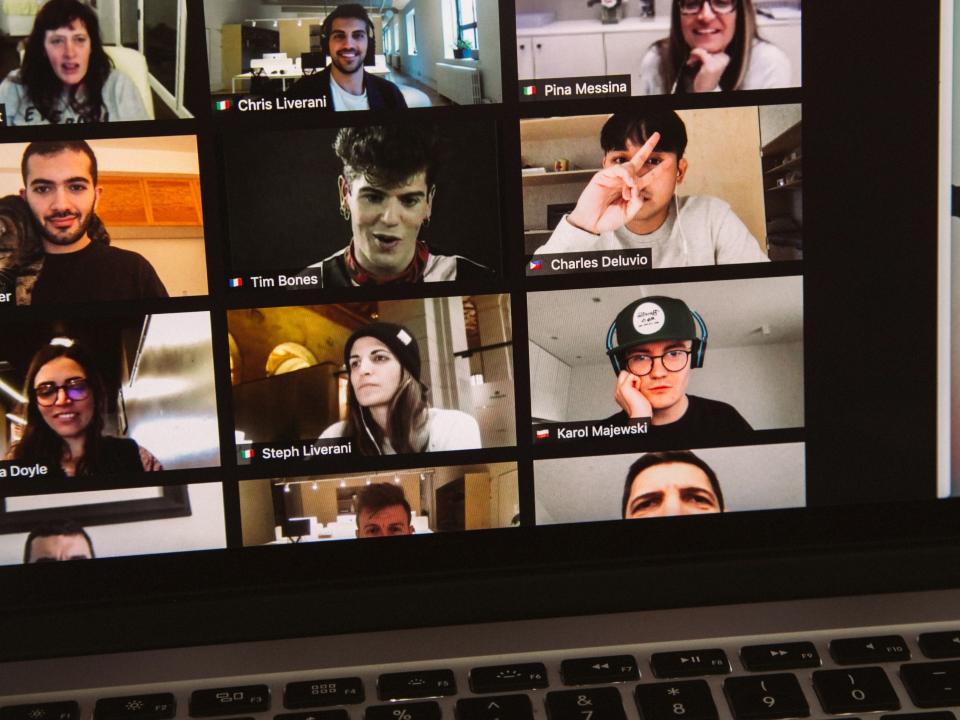This video will cover:
01:05 Being strategic about how to use lecturing on Zoom
01:58 Using breakout discussion groups as part of your Zoom classes
02:58 Varying the activities, pace and rhythm of the Zoom classes

This video will cover:
01:05 Being strategic about how to use lecturing on Zoom
01:58 Using breakout discussion groups as part of your Zoom classes
02:58 Varying the activities, pace and rhythm of the Zoom classes
Hi, I’m Stephen Hersh. I teach at Northwestern University, and I’m excited to share with you the most important lessons I have learned from experience, about how to do effective remote teaching, which in my case means teaching with Zoom.
I’ll talk about three main things. Number one – being strategic about how to use lecturing on Zoom. Number two – using breakout discussion groups among the students in a strategic way. And number three – making sure to have variety in the activities, in the pace, in the rhythm of the class sessions.
And for context, let me tell you just a little bit more about myself. I teach in the integrated marketing communications programme in the Medill School at Northwestern University.
I’ve had a long career in advertising and marketing, and I teach students a topic called consumer insight, which means teaching them concepts in psychology, sociology and cultural anthropology to help them better understand the customers of whatever organisation they may end up working in, so that they can serve those customers better.
The first important piece of feedback I got from my students about Zoom teaching was when they asked me to not talk so much.
Now, they were very nice about it, but my students explained to me that when someone stands there on Zoom explaining things for a long time, their minds wander. It’s hard for them to focus; it’s hard for them to take in the information.
They use these funny expressions, like saying, “I go into a Zoom coma.” They said, “I go into a Zoom trance.” So, when I lecture on Zoom, I try to keep it to compact segments; I try to keep it to about five minutes or less. I try to keep the explanations of each concept very clear, very focused, concise.
So what happens next, after they’ve heard a short explanation of a concept in a short lecture? Well, I put them into discussion groups.
Zoom, as you know, enables us to create breakout groups. And what I do is put students into groups of about three or four, and I ask the students to discuss in their groups, first of all, is the concept they just heard about clear? Do they all get it? If someone doesn’t quite get it, can another student in the group explain it or clarify it?
And then I ask students to use the concept that they’ve just heard about, to use it to solve a problem or analyse a situation. And students tell me they love these breakout discussions.
It gives them a chance to use the ideas, to think out loud with them, to hear the perspectives of other students, and to actively use the concepts themselves to do something with the concepts.
And students have told me that when they’re in the main classroom and they see all those faces on the grid on Zoom, it can be a little intimidating to speak up.
But if they’ve done the breakout discussion, they’re kind of prepared with something to say because they’ve already thought the issue through a little bit.
So, when we create a rhythm of some explanation, or lecture, followed by group discussions where the students work with the concepts themselves, followed by reconvening as a class to discuss as a larger group, then we have some variety built in. And then I introduced some other activities like polls, using a tool like polleverywhere.com.
So those are the three most important things I feel I’ve learned from my experience with remote teaching and from talking with my colleagues at Northwestern.
First of all, be strategic about the use of lectures. Number two, use breakout discussions. And number three, create a variety in terms of the activities, the pace and the rhythm.
If you want more, I’ve written an article that will give you more about my experiences with remote teaching. You can find a link to the article at bridgingsocialdistance.com.
Bridging Social Distance is a little organisation that I run with my colleague from Northwestern, Byron Stewart. He’s an actor and director, and he teaches in the engineering department at Northwestern.
Byron and I do workshops with teachers on remote teaching and on how to get students more engaged in the classroom. We also do workshops on how to do more effective remote work by making a stronger human connection through tools like Zoom.
So, thank you very much for listening, and I hope these ideas were useful. If you’d like to reach out, you can find me through bridgingsocialdistance.com.
This video was produced by Stephen Hersh, lecturer in the Medill School at Northwestern University.
If you would like advice and insight from academics and university staff delivered direct to your inbox each week, sign up for the Campus newsletter.
For more Campus resources on this topic, go to our collection Making online learning fun.
comment